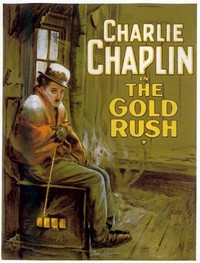
The Gold Rush (1925)

Raiting: ![]() 8,1 /10
8,1 /10
Genre: Comedy
Director: Charles Chaplin
Stars: Charles Chaplin, Mack Swain and Tom Murray
Country: United States
Release date: 12 July 1925
Length: 95 minutes / 72 minutes (re-release)


Raiting: ![]() 8,1 /10
8,1 /10
Genre: Comedy
Director: Charles Chaplin
Stars: Charles Chaplin, Mack Swain and Tom Murray
Country: United States
Release date: 12 July 1925
Length: 95 minutes / 72 minutes (re-release)